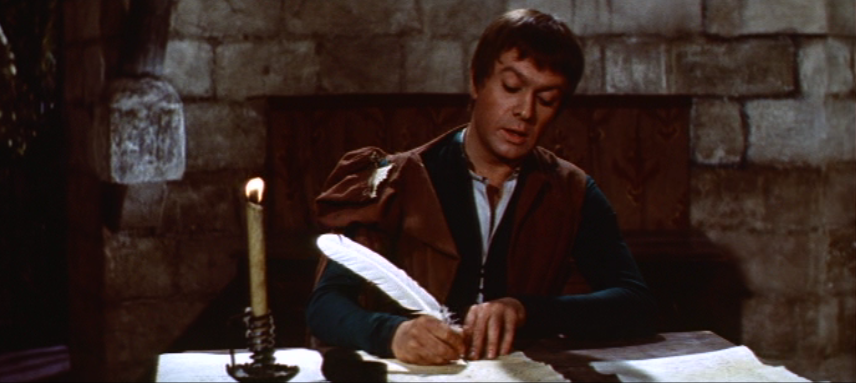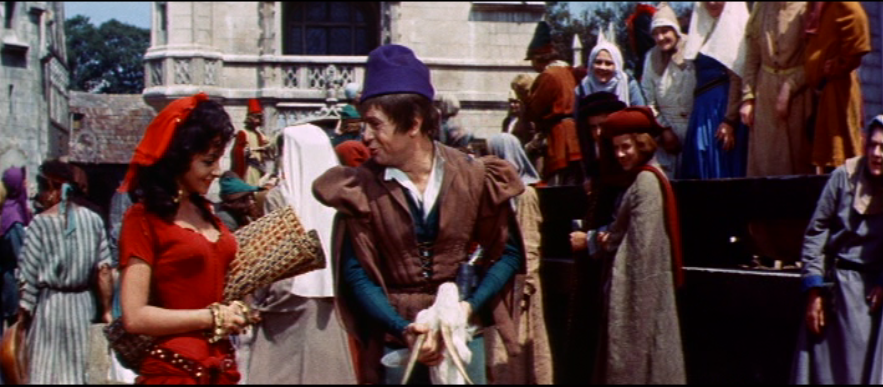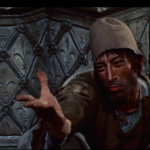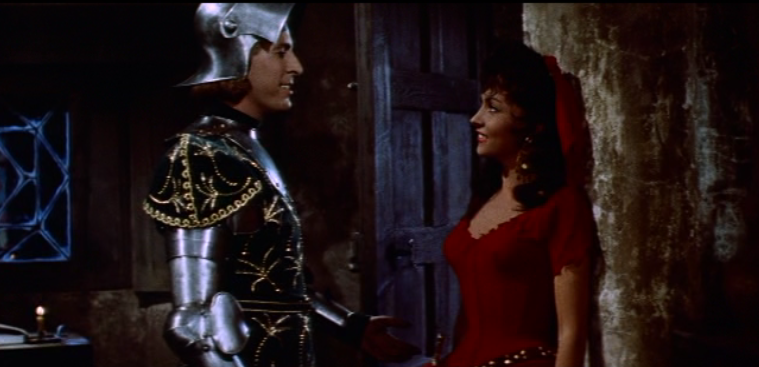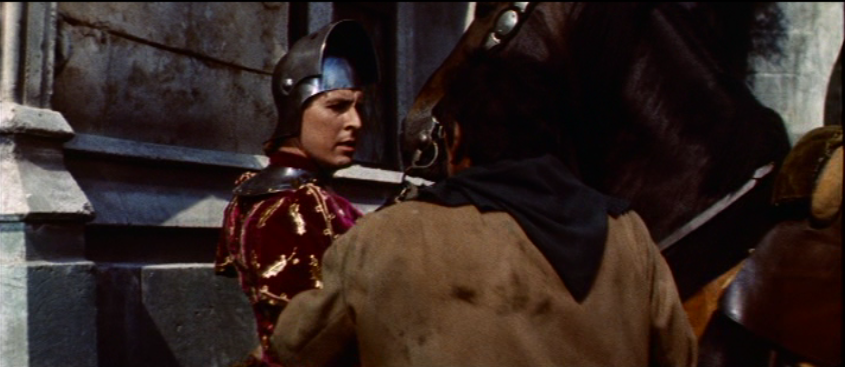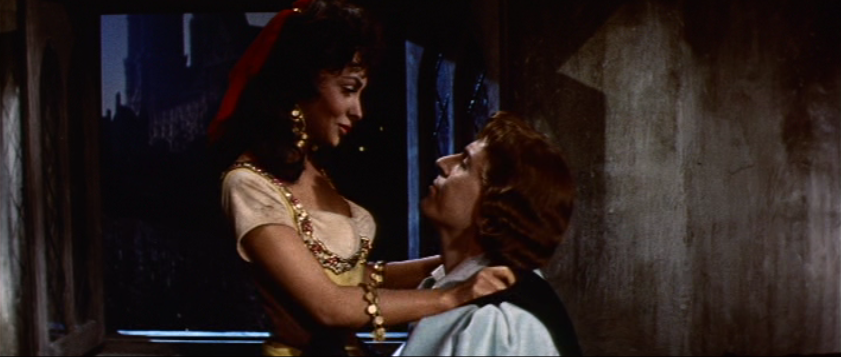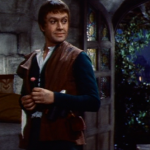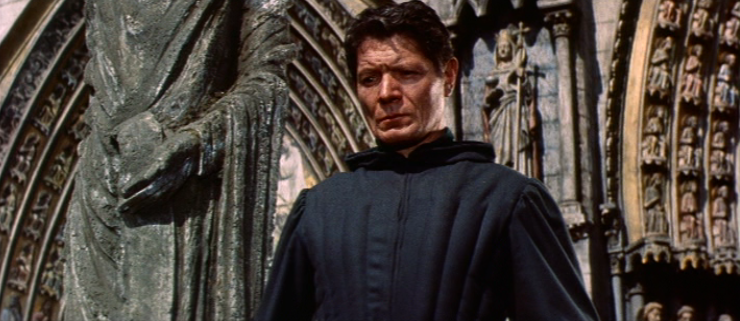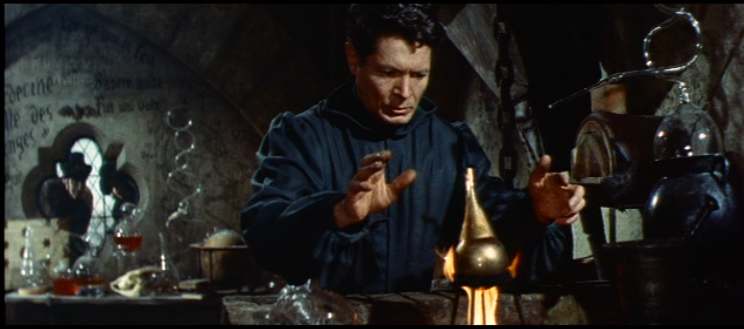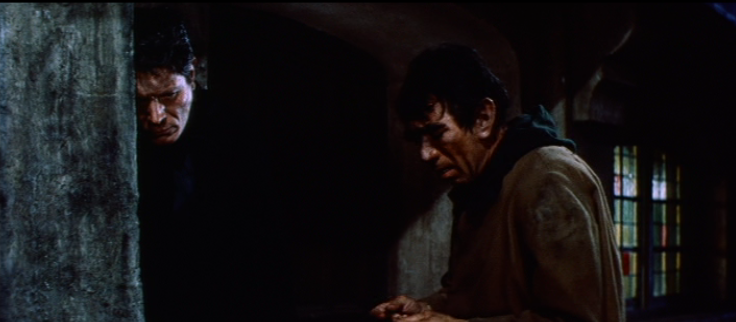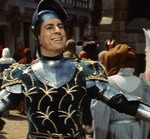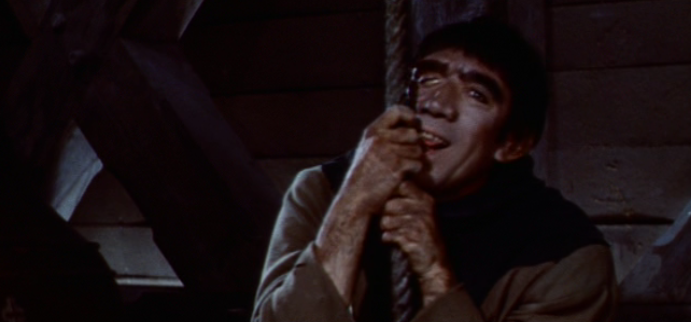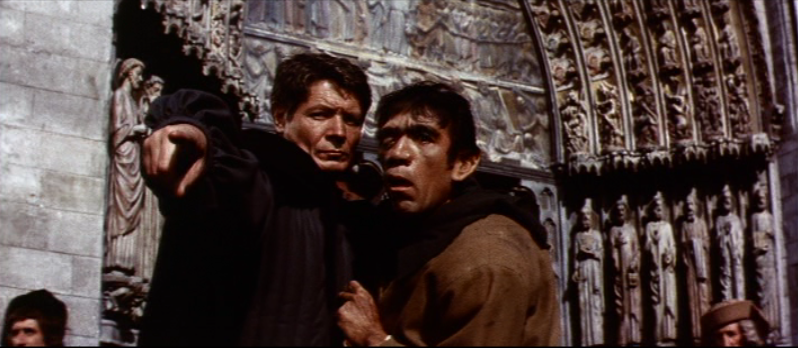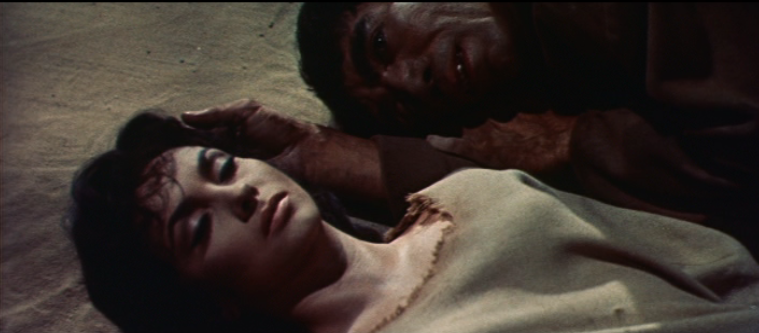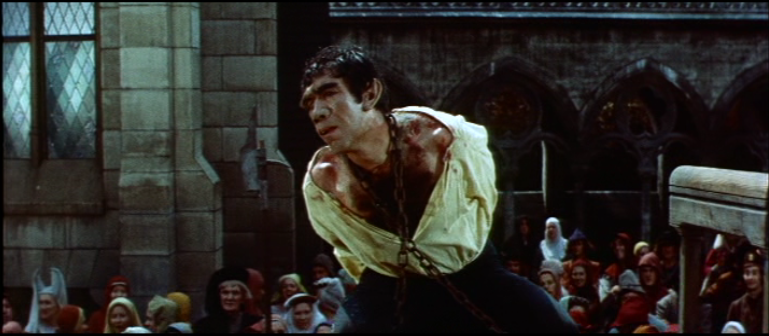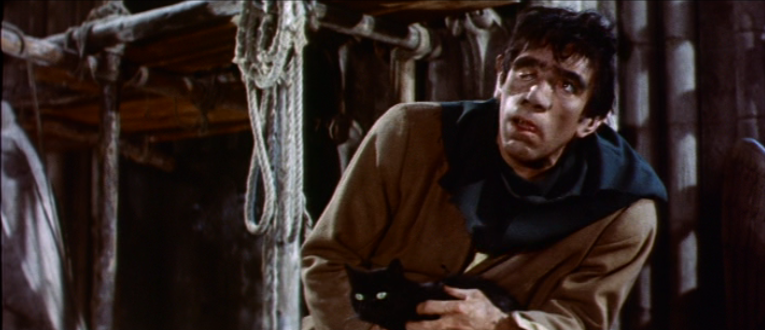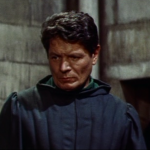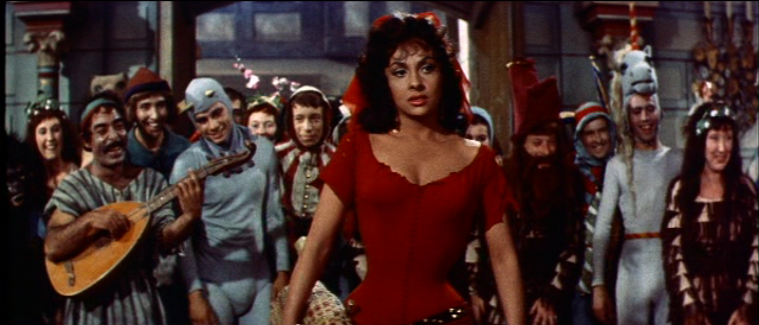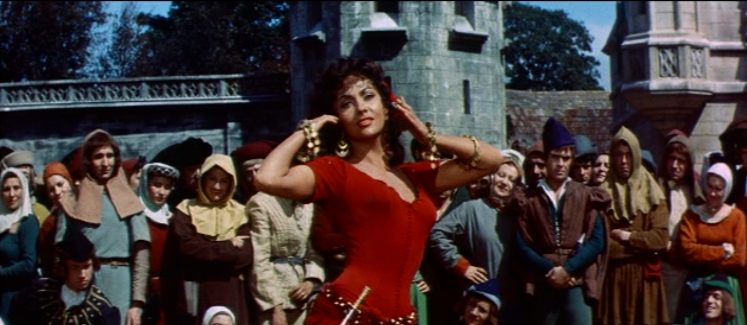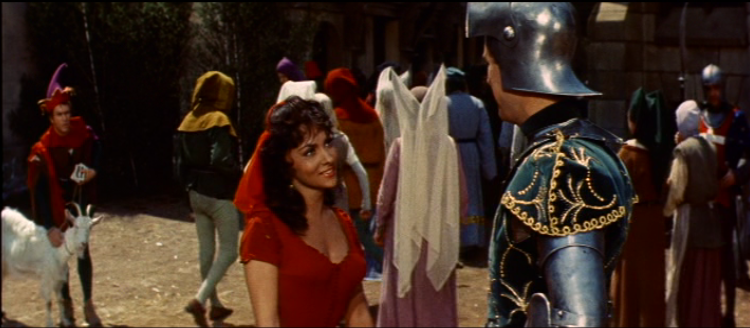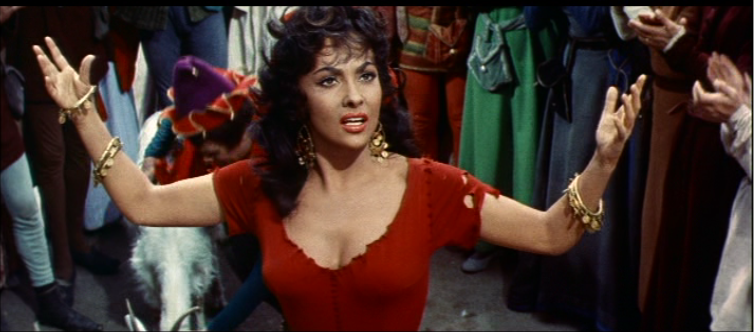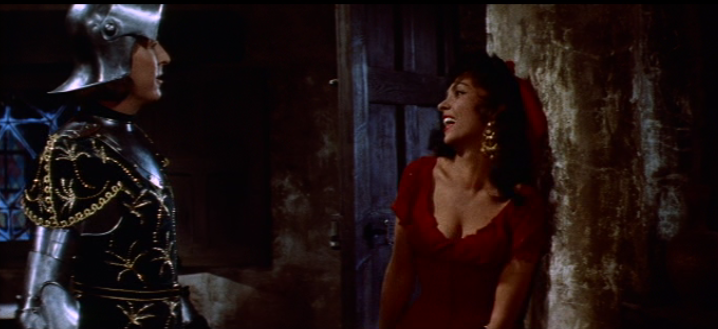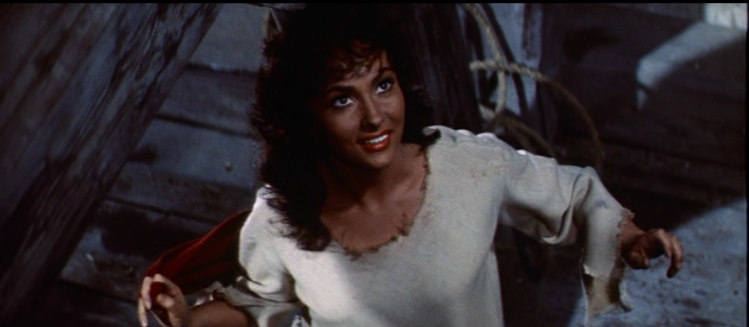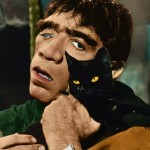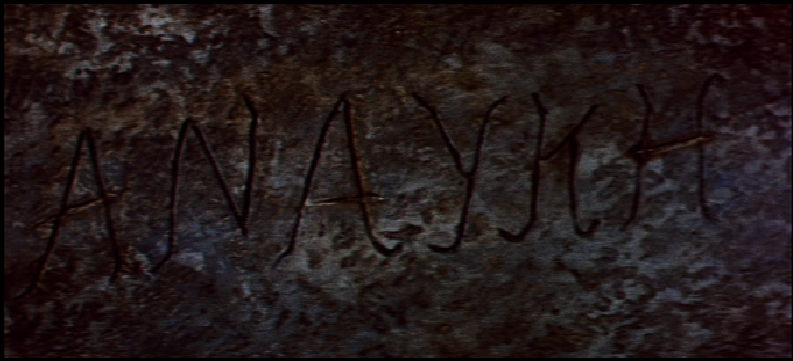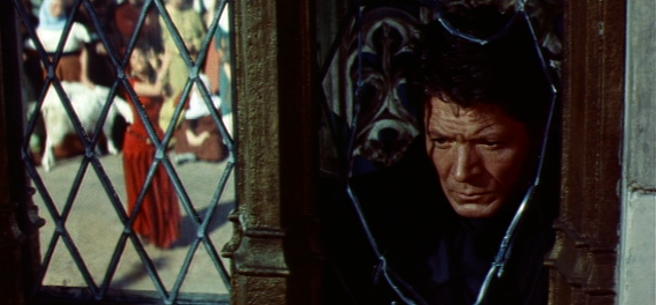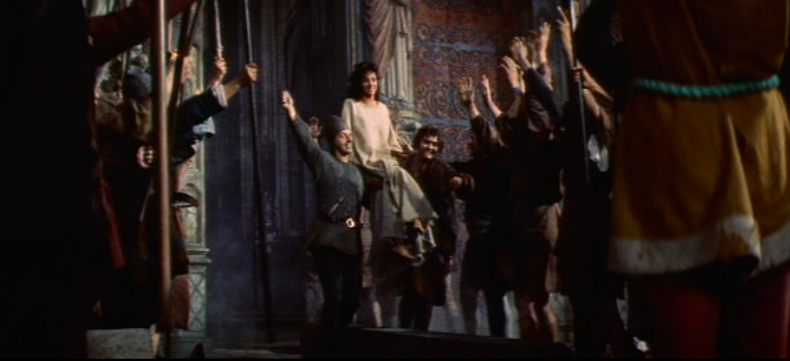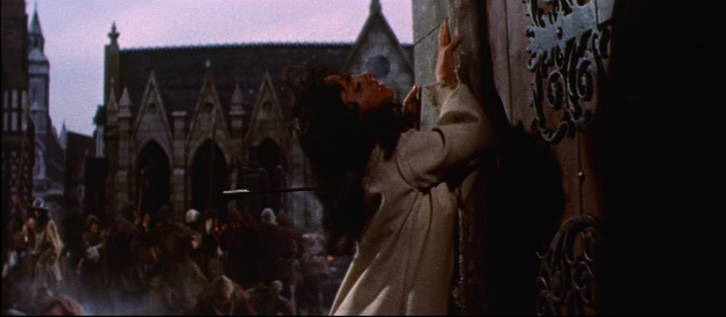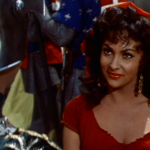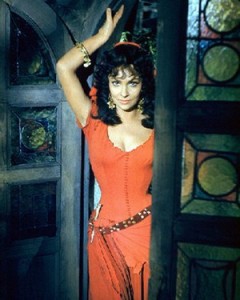Gringoire is another character that can be a lot of different things pending on the needs of the version. He can be the hero, comic relief, narrator or a useless poet.
The 1956 version of Gringoire is the useless poet variety. That’s not to say he isn’t enjoyable. He gets a few funny lines but not enough to say he is the comic relief.
So what does this Gringoire do in this version? Well, this Gringoire pretty much acts like he does in the book. He write a play that no cares about, he knows Frollo, he is smitten with Esmeralda, he almost gets hanged and marries her but doesn’t push the relationship and is just happy that she knows his name. He does want to help save Esmeralda for the removal of sanctuary but he told to stay behind and so he writes instead. And we never see again.
His character gets no resolution. I mean did he write that poem of the Court of Miracle’s victory with Jean as the hero? We’ll never know and I guess that makes him tragic.
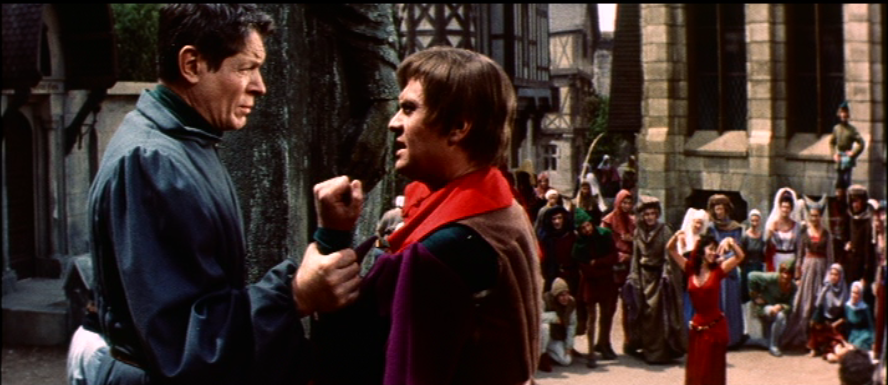
Robert Hirsch as Gringoire, Alain Cuny as Phoebus, & Gina Lollobrigida as Esmeralda, 1956 Hunchback of Notre dame
All kidding a side, Gringoire’s depiction in this may keep to book with exception of the ending as he is not tricked by Frollo and doesn’t runs off with Djali but as he doesn’t do much that for the main plot we can’t connect with him.
He’s just a guy who goes with the flow, likes to write and hangs out with pretty ladies and goat. Maybe if we saw his reactions to Esmeralda’s death or if we saw him react to any of the drama it would have added to his character. So Gringoire is dull but he’s few silly lines make him slightly enjoyable.
Next 1956 Article; Clopin


